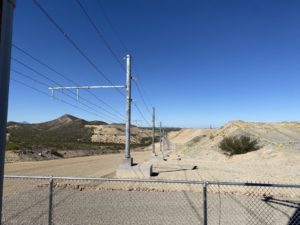As a global player in mining technology, Komatsu says it is also at the forefront of helping its customers as they strive to achieve interim and final emissions targets. That work starts with partnerships that guide development efforts related to process optimisation, interoperability and common sustainability goals.
Dan Funcannon, VP North America Engineering and Development, Komatsu

Komatsu offers a unique depth of experience and large installed base of electric mining equipment, including those taking advantage of many different technologies including trolley assist, energy storage, automation, and optimisation technologies through its Fleet Management Systems (FMS). The next generation of products in the journey toward decarbonised mining is coming soon. Ahead of his keynote presentation on the opening day of The Electric Mine 2023 event in Tucson, Arizona IM talked with Dan Funcannon, VP North America Engineering and Development, Komatsu, about its experience, vision and partnership approach, including his views on so-called “swarms” of smaller mining trucks as an option.
IM: Electrification as a way to reduce emissions is a major focus for all the major OEMs and miners currently. What differentiates Komatsu’s approach to helping mining move away from diesel-powered propulsion? Is it a combination of flexibility and proven electric drive performance?
DF: Komatsu has been electrifying mining equipment for over a hundred years, so, while industry focus on it continues to grow at a rapid pace, this concept is something we have decades of experience with, to benefit our customers. For the equipment itself, it’s a matter of building on our proven platform to add the flexibility to adapt to these new energy sources. We see this as an opportunity to refresh our proven designs while making accommodations for the flexibility that we believe will be beneficial to our customers for years to come.
IM: While battery propulsion remains the primary focus for the ongoing EVX truck program, does Komatsu remain open to hydrogen as a power source? Are you actively working on a fuel cell option in tandem with the battery option?
DF: We are actively working on other zero emissions technology including hydrogen fuel cells for our products. As we have announced, our core strategy is to provide options for our customers through our Power Agnostic platform.
IM: Collaboration has been and is a key part of accelerating electrification in the mining sector – the Charge On Challenge and The Electric Mine Consortium being good examples. Aside from your GHG Alliance work, how else are you collaborating within the industry to help your mining clients decarbonise their operations and hit their climate targets?
DF: Collaboration with our customers is key to Komatsu’s business model, and we are lucky to have strong long-term partnerships with several important players in our industry. We continue to leverage these important partnerships to innovate our product lines and create new solutions that will help our customers progress toward their zero emissions mining targets. Of course, the current environment is also providing opportunities to explore some new collaborations. We are engaging with many new potential partners in order to expedite our development activity and ensure that our customers have the infrastructure available to deploy our solutions when they are available.
The test trolley line at Komatsu’s AZPG near Tucson, Arizona

IM: With FrontRunner, Komatsu is the longest established player in the AHS space; how do you see automation and electrification complementing each other in the long run and do you see battery trolley representing a good first use case for this?
DF: Automation and optimisation will certainly play an important factor in achieving electrification while maintaining or improving productivity and TCO. Automation combined with a battery-trolley haul truck is one example where automation will be able to add value, but there are others including dynamic and static charging scenarios.
IM: There is also a lot of talk in mining about “swarms” of smaller class autonomous and electric trucks becoming an option in place of the largest ultraclass models. What is Komatsu’s take on this concept?
DF: Certainly, removing the operator and improving the safety of the operation though autonomy opens new possibilities. I can’t say if this will be a popular concept, but we are supporting some studies to better understand the possibility and we are certainly aware of ‘swarm’ smaller class fleet mining being considered as an option by several customers. Under the swarm fleet scenario, automation and fleet optimisation will play an increasingly important role to tackle congestion challenges and the skills shortage, as no mine will be able to hire the sheer quantity of drivers needed to operate the large quantity fleet. While there is more work needed to better understand the possibility and challenges, our technology development roadmap for both automation and optimisation certainly has taken in to consideration the requirements around the needed scalability to support a swarm fleet operation.
IM: Will mining’s sustainable future play out differently for different miners depending on where they operate, their access to renewable energy and the nature of their existing fleets such as age and size?
DF: Komatsu recognises that each customer’s path to decarbonisation will be unique, based on many different factors, such as the ones mentioned. This is exactly why we believe our Power Agnostic strategy is a good one in order to support the differences in each customer’s journey both from a technology standpoint and from a timing standpoint.











